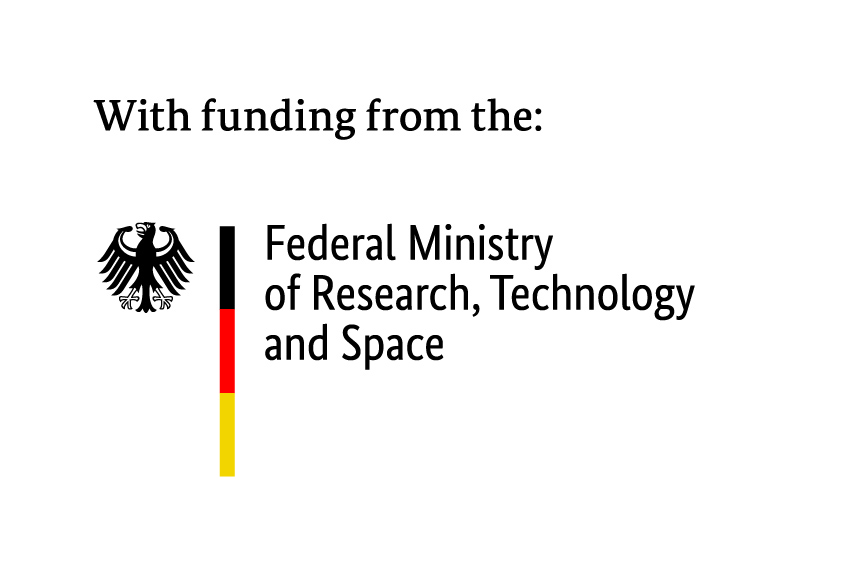AI Courses in Summer Semester 2025
The following AI courses are provided by Prof. Michael Färber in Summer Semester 2025 at TUD Dresden University of Technology.
| No. | Course Title | Modules | SWS |
|---|---|---|---|
| 1 | Erweitertes Komplexpraktikum ‘Vertrauenswürdige Künstliche Intelligenz’ | NF-B-510, INF-B-520, INB-MA-PR | 0/0/8 |
| 2 | Forschungsprojekt ‘Vertrauenswürdige Künstliche Intelligenz’ | INF-PM-FPA, INF-PM-FPG | 0/0/8 |
| 3 | Forschungsprojekt ‘Vertrauenswürdige Künstliche Intelligenz’ (CMS) | CMS-PRO | 0/0/12 |
| 4 | Großer Beleg Skalierbare Software-Architekturen für Data Analytics | 0/0/0 | |
| 5 | Komplexpraktikum ‘Vertrauenswürdige Künstliche Intelligenz’ | INF-B-510, INF-B-520, INF-MA-PR | 0/0/4 |
| 6 | Teamprojekt Vertrauenswürdige Künstliche Intelligenz (CMS) | CMS-LM-AI | 0/0/8 |
Potential topics for Komplexpraktikum, etc.
Below you will find a list of available topics for the Komplexpraktikum (and related courses) in the summer semester 2025. If you are interested in any of the topics, please reach out to the contact person listed under that topic. When contacting them, please include: 1. a short CV, 2. a transcript of records, 3. a brief statement about your skills and motivation for choosing that topic. Note that we are particularly looking for students who are interested in turning their work into a scientific publication afterwards. We look forward to hearing from you.
Topic 1: Function Aware Citation Retrieval and Generation
Large Language Models (LLMs) have dramatically advanced natural language processing tasks, including question answering and text summarization. However, ensuring reliable, trustworthy citations remains a key challenge. Most current methods use Retrieval-Augmented Generation (RAG) to enhance citation quality by integrating source retrieval, but they often ignore the citation function—the specific role each citation fulfills (e.g., giving background, comparing methods, or suggesting future work).
Research Goal
This project seeks to develop a function-aware citation pipeline with four main components:
- Text Generation: A LLM produces contextually relevant, coherent responses to user queries.
- Citation Function Classification: A classification model categorizes citations by their role (e.g., ‘background’, ‘uses’, ‘compares’, ‘continuation’, ‘future’, ‘motivation’)
- Function Aware Retrieval: Relevant documents are retrieved from specialized indexes built for each citation function, ensuring focused and accurate sourcing.
- Function-Aware Citation Generation: The retrieved citations are merged into the LLM’s output in a way that respects their specific purpose, providing well-aligned references.
Prerequesites
- Very good programming skills in Phyton
- Experience in the implementation of search engines
- Machine learning expertise
- Basic understanding of RAG
References:
[1] Gao, T., Yen, H., Yu, J., Chen, D.: Enabling large language models to generate text with citations. In: Proceedings of the EMNLP 2023. pp. 6465–6488 (2023). https://aclanthology.org/2023.emnlp-main.398
[2] Jurgens, D., Kumar, S., Hoover, R., McFarland, D., Jurafsky, D.: Measuring the evolution of a scientific field through citation frames. TACL 6, 391–406 (2018). https://aclanthology.org/Q18-1028/
[3] Chatrinan, K., Noraset, T. & Tuarob, S. GAN-CITE: leveraging semi-supervised generative adversarial networks for citation function classification with limited data. Scientometrics 130, 679–703 (2025). https://doi.org/10.1007/s11192-025-05233-1
Contact Person: Tobias Schreieder, tobias.schreieder@tu-dresden.de
Topic 2: Uncovering the Dark Side of Large Language Models: Bias, Harm, and Toxicity
Large Language Models (LLMs) have achieved remarkable capabilities in natural language understanding and generation. However, alongside their successes, they also pose significant risks when it comes to generating biased, harmful, or toxic content. This project investigates the dark side of LLMs by systematically evaluating and analyzing their behavior across different social and ethical dimensions. The student will explore questions such as: How do LLMs reproduce or amplify societal biases? Under what conditions do they generate toxic or discriminatory content? How do factors like prompt phrasing, persona conditioning, or fine-tuning methods affect harmful outputs?
The project will involve a combination of experimental evaluation, data analysis, and possibly the development of simple mitigation strategies. The goal is to better understand the limitations and failure modes of current LLMs and contribute to the research on AI safety and fairness.
Requirements:
- Strong interest in NLP, AI-ethics or fairness in LLMs
- Experience with Python and deep learning libraries (e.g., PyTorch, Hugging Face Transformers)
Contact person: Shuzhou Yuan, shuzhou.yuan@tu-dresden.de
Topic 3: LLM Reasoning for Interpolation of Knowledge Gaps in External Contexts for RAG
This project investigates how Large Language Models (LLMs) can address knowledge gaps in external contexts for Retrieval-Augmented Generation (RAG) tasks. In RAG, incomplete or irrelevant documents retrieved can limit the quality and completeness of generated responses, especially in long-form responses. This project aims to investigate LLM-based reasoning approaches to assess and improve the relevance and completeness of information retrieved from external sources. Additionally, it examines how LLMs can leverage their internal knowledge to fill in missing details, refine the retrieval process, and ultimately generate more comprehensive and high-quality responses. The goal is to develop methods that enable RAG systems to better handle incomplete or imperfect external contexts, improving their overall performance in generating detailed and accurate long-form responses.
Problem Description:
In RAG, relevant contexts are often not or only partially retrieved, which limits the quality and completeness of the LLM-generated responses. This is especially the case for long-form responses where relevant information may be scattered across several documents that all need to be retrieved.
RQ 1:
How can we use LLM-based reasoning to decide whether the information from the retrieved documents is relevant, correct , and complete to generate a comprehensive response to a query?
RQ 2:
Given the retrieved documents are irrelevant, incorrect, or incomplete for a query, how can we use LLM-based reasoning to interpolate the information using the internal, parametric knowledge of an LLM to add relevant context and enhance the completeness and quality of the generated response?
RQ 3:
Given the retrieved documents are irrelevant, incorrect, or incomplete for a query, how can we use LLM-based reasoning to choose a different retrieval approach that results in retrieving better external contexts that enhances the completeness and quality of the generated response?
RQ 4:
What are pros and cons for using additional retrieved, external knowledge vs. parametric, internal knowledge to interpolate knowledge gaps in external contexts for RAG?
Required skills & experiences:
Retrieval Augmented Generation, LLM prompting strategies, understanding of LLM reasoning models (e.g, DeepSeek-R1, OpenAI o1 and o3-mini, etc.), document retrieval and text embeddings (e.g, sentence embeddings etc.), vector databases (e.g, Weaviate, Pinecone, etc.).
Beneficial skills & experiences: LLM agents and tool use, graph databases (RDF graphs, Neo4j, etc.), LLM fine-tuning.
Contact person: Tim Schopf, tim.schopf@tu-dresden.de
Topic 4: Reinforcement Learning from Human Feedbacks for LLM Reasoning: Cr*p or Gold?
In a recent interview, Geoffrey Hinton sharply criticized RLHF, calling it “a pile of crap” and comparing it to patching endless bugs in a broken system. Yet Reinforcement Learning from Human Feedback (RLHF) remains the dominant method for aligning language models, especially for complex reasoning tasks. But does it truly work, or are we polishing a flawed foundation?
This project investigates whether modern RLHF variants (DPO, PPO, GRPO, etc.) meaningfully improve LLM reasoning, or merely mask deeper issues. Are these variants addressing Hinton’s critique, or proving his point? Let’s find out.
Reading Material: https://arxiv.org/abs/2402.03300
Contact person: Zhan Qu, zhan.qu@kit.edu
Topic 5: Explain the Unexplainable: Reinforcement Learning meets Temporal Graph Neural Networks
Ever wondered how models make decisions in dynamic, evolving systems—like financial transaction networks, traffic networks, or social media interactions? Welcome to the world of Temporal Graph Neural Networks (TGNNs)—and the quest to explain their predictions using Reinforcement Learning!
Understanding the predictions of Temporal Graph Neural Networks (TGNNs) is a growing challenge in the field of explainable AI. These models, designed to learn from evolving relational data, are increasingly used in high-stakes domains—but their decision-making processes often remain opaque. We are going to explore a cutting-edge research direction: using Reinforcement Learning (RL) to generate interpretable explanations for TGNN models. We will study and build upon recent methods such as SubgraphX, T-GNNExplainer, and CoDY.
Reading Material: https://arxiv.org/abs/2403.16846
Contact person: Zhan Qu, zhan.qu@kit.edu
Topic 6: Explain the invisible: RL meets 3D Point Clouds for Wake Vortex Detection
Ever wondered how planes disturb the air around them—and how we might detect those invisible trails using 3D sensors? Wake vortices—turbulent air patterns generated by aircraft—pose significant risks in aviation safety. Detecting these complex phenomena from evolving 3D LiDAR scans is a challenging task, often addressed using advanced point cloud segmentation models. But as these models grow in complexity, so does the need to understand their predictions.
In this project, we’ll explore how to build a Reinforcement Learning-based explanation method that can interpret predictions made by deep learning models on evolving 3D LiDAR scans. That means teaching an agent to find the most critical regions in space (and time) that led to a model’s decision—kind of like reverse-engineering a machine’s thought process in midair. If you’re excited about blending RL, 3D vision, and explainable AI to tackle real-world challenges in aviation and beyond, this is a great opportunity to lead and contribute to a novel research direction.
Reading Material: https://arxiv.org/abs/2503.00518
Contact person: Zhan Qu, zhan.qu@kit.edu
Topic 7: Reasoning Language Models go Multimodal
This project explores the integration of reasoning-based language models with vision-language models to tackle complex multimodal tasks. It aims to develop models that effectively reason over both textual and visual data. The project emphasizes enhancing AI’s ability to solve diverse and challenging problems by combining these cutting-edge techniques. Applicants should be comfortable writing code in Python and have a solid understanding of deep learning, ideally with a focus on vision or language models. Practical experience with large language models or vision models is a plus.
Contact person: Nicholas Popovic, nicholas.popovic@tu-dresden.de



